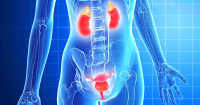
Incontinence
Urinary incontinence refers to the loss of bladder control, resulting in the unintentional leakage of urine. There are several types of urinary incontinence, including stress incontinence, urge incontinence, mixed incontinence, and overflow incontinence.
Treatments for urinary incontinence vary depending on the type of incontinence and the underlying cause. Some common treatments include pelvic muscle exercises (also known as Kegel exercises), which can help strengthen the muscles that support the bladder and urethra. Medications, such as anti-muscarinics and beta-3 agonists, can also be used to relax the bladder and reduce urinary frequency and urgency.
Other treatments for urinary incontinence include bladder training, which involves gradually increasing the time between trips to the bathroom, and electrical stimulation, which uses mild electric currents to stimulate the muscles of the pelvic floor. In some cases, surgery may be necessary to repair damage to the urinary tract or to support the bladder.
It's important to consult a healthcare provider for an accurate diagnosis and personalized treatment plan. Lifestyle changes such as maintaining a healthy weight, avoiding caffeine and alcohol, and quitting smoking can also be helpful in managing symptoms of urinary incontinence.











